Tony’s Short Stories: Pursuit
Few developments in aviation history have been as pivotal as the evolution of the pursuit, or fighter, airplane. This article, penned by Major Hoyt Vandenberg in September 1941, offers an in-depth exploration of the technological advancements and strategic considerations that shaped fighter planes of the era.
As a seasoned military aviator and graduate of the Army War College, Major Vandenberg provides unique insights into the critical role that pursuit planes play in the defense of nations. His analysis reflects the rapid pace of aviation innovation and underscores the enduring importance of adaptability in military strategy, a principle that is of utmost significance in the context of aviation history.
As we read this article, we gain a deeper appreciation for the complexities and challenges early aviators and engineers faced in their relentless pursuit of aerial superiority.
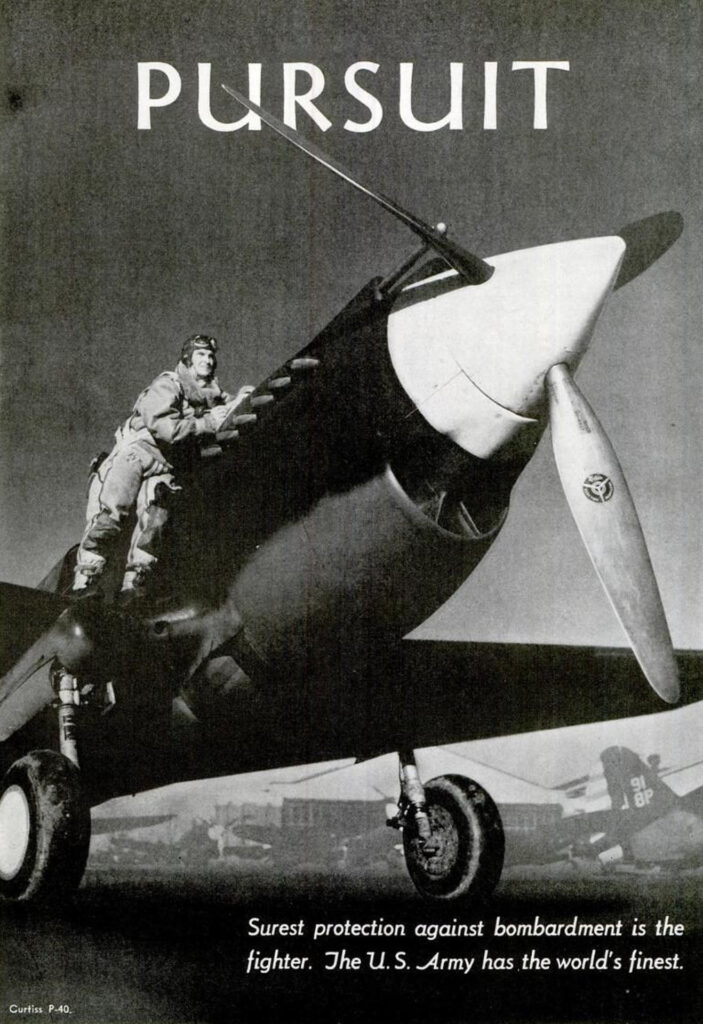
Pursuit
By Major Hoyt Vandenberg
Published in Flying Popular Aviation, September 1941.
A West Pointer, Major Vandenberg, native of Wisconsin, joined military aviation in 1923. He is 42, a graduate of the Army War College and tactical school, and holds ratings as command pilot, and corps observer.
Present pursuit or fighter planes’ development can be traced back to the Army’s first Wright military ship, in which the passenger held a machine gun between his knees. Specialized functional development of planes had not yet taken place. During the World War, however, such types as the Nieuport, Spas, SE-5, Sopwith Camel, Fokker and Albatross were developed. These had a performance margin over ships designed for load-carrying or observation work and were armed with one or two machine guns.
Left-over wartime equipment was in general use for many years. A new trend appeared about 1923, when racing airplanes were developed and their military counterparts produced as fighters. Among these were the Army USXVP-1, from the Air Corps Verville Packard racers and the Curtiss PW-8, and from the Curtiss Army and Navy racers. These were followed by small, highly-maneuverable biplanes equipped with 400 to 600 horsepower engines and two guns. Performance increased slightly as time added technical developments and increased horsepower. In this family were the Curtiss Hawks and the Boeing P-12 series.
By 1932, increased performance demands brought such transition models as the P-26A, with its wire-braced thin monoplane wings. Next came the Seversky P-35 and the Curtiss P-36. These allowed increased weight-carrying capacity and power without essentially modifying the basic design. During 1939 and 1940, tremendous increases in power, performance and required load have produced planes which, although similar in general appearance, actually have different standards. Some of the handiness and ability to operate from small fields has been sacrificed for high speed and carrying capacity.
Fundamentally, the pursuit airplane is a relatively small, high-velocity projectile carrying a pilot to direct the missile to intercept and destroy other projectiles in flight. The sustained speed of modern airplanes is equal approximately to the average speed of some of the large size artillery shells.
In order to make interception at all, the pursuit ship’s outstanding characteristic must be high performance. Most interception depends on ground direction. Observers report an enemy aircraft’s positions and give interception directions to the friendly pursuit aircraft. The pursuit airplane acts as a mobile anti-aircraft unit which can be directed outside the range of normal anti-aircraft fire and whose course can be changed at will after the projectile is fired.
Pursuit planes may be used to patrol areas where enemy aircraft are expected in the hope of making chance interception. In the last war, pursuit units had daily patrol missions on which they picked up targets as they presented themselves.
There is also the problem of supporting friendly aircraft. The pursuit plane is supposed to engage enemy fighters and prevent them from interfering with bombardment or reconnaissance missions. In simple terms, the pursuit ship places itself between the possible enemy attack and the planes to be protected, thus greatly deflecting the attack itself.
If the pursuit breaks off its protective duties for a fight, the friendly planes will be forced to go on unescorted.
In general, then, the pursuit plane has a purely defensive function, but the way it carries out this function is always offensive. It is designed, built and flown with the fundamental idea of carrying the fight to the enemy. If performance is insufficient to provide interception or give an advantage in maneuvering, the ship has no reason to exist; it is of more benefit to the enemy than to friendly forces, for it requires maintenance, supply and personnel almost to the same degree that a superior one would.
Performance must be gauged in broad terms, however. It is a composite of measurable items like climb, speed and ceiling, plus a great many intangible characteristics such as handling, maneuverability, acceleration in dives and the ability to make sharp turns at low speeds. Speed differences are not necessarily the deciding factor.
A pursuit pilot must determine his ship’s strongest features and exploit them fully, as well as avoiding maneuvers in which the enemy has the advantage. Thus, a skillful pilot may utilize a somewhat inferior plane’s strong points to establish a stalemate in which the enemy can never get sufficient advantage to be sure of victory. An unskilled pilot with a superior airplane, on the other hand, may make the fatal mistake of trying to beat the enemy on the enemy’s strong ground.
Pursuit pilots always are investigating their own types’ performance limits in order to determine unusual maneuvers which can be employed to their opponents’ disadvantage. Thee Germans’ Messerschmitt Me-109, for instance, has a known tendency toward stiffening of the controls in high-speed dives, making it extremely difficult to recover after a dive has been well established. In several cases RAF pilots have tricked Messerschmitt pilots into low-altitude dives, with the result that the Me-109’s plunged into the ground or sea.
To deliver a successful blow, pursuit planes must carry sufficient fire-power to destroy their opponents. Extremely effective armament installations are possible with several gun arrangements. There always will be considerable variation between different planes, due to day-to-day considerations, design of the planes themselves and changes in tactics.
Considering pursuit planes as projectiles, it might be assumed that a plane can bring down any enemy with which it can collide. Machine guns, bombs, or other armament, may be rated defensive measures enabling the pilot to make several attacks with less hazard than in collision. Armor plate accomplishes the same thing. But unless its guns actually provide more victories than could be won by collision, it is obvious the pursuit plane’s striking power has not been increased. This explains the tremendous armament increase in present pursuit types and the tendency of fighter pilots to carry the attack to close range in an effort to equal actual collision’s effectiveness.
Modern metal airplanes can absorb a great deal of small-caliber fire, making necessary installation of many guns. The extremely effective British Spitfires and Hurricanes both employ eight guns. Armor plate minimizes effectiveness of small-caliber hits, however, and there is consequently a general trend toward heavier caliber guns. This in turn raises problems of greater weight, smaller rates of fire and other attendant difficulties. There is no final answer to the problem of armament versus armor and no one solution provides 100 percent insurance of success in combat.
Suggestions that all equipment, instruments, etc., should be eliminated from fighting aircraft in wartime have their answer in the present conflict, where both sides’ planes are as well equipped as they ever have been. Numerous new devices designed to improve combat efficiency have been added. Neither radio nor flying instruments can be sacrificed if a plane is to have maximum utility. The days of small, light, simple pursuit ships with nothing on the instrument panel but an airspeed indicator, tachometer and oil gauge definitely are gone.
Automatic propeller control, retractable landing gears, flaps and other modern accessories are absolute essentials for performance and, often, safety, despite attendant increased complication.
Since it takes at least two years to get even a relatively simple pursuit ship into production after its initial design, many American planes now being manufactured obviously are simply modifications of others designed and pretty well fixed in their details long before the present war. It is remarkable that they have been able to go through such tremendous changes and still function. For example, today’s Curtiss P-40 is basically the old P-36, initially delivered four years ago. Weight increases to accommodate armament requirements, armor, leakproof fuel tanks, heavier power plants and structural changes made necessary for improved performance, have amounted almost to carrying a 2,000-pound bomb on the original P-36. Yet refinements in design and technical improvements here and there have permitted absorption of this tremendous weight increase.
Initial design of the Army’s Bell Airacobra (the P-39) and Lockheed P-38, which give promise of being two of 1941 and 1942’s outstanding planes, was begun in 1935. They have been considerably modified and projected from the originals without unduly jeopardizing their most outstanding characteristics. Performance figures usually represent data obtained during test of one ship to determine its compliance with design guarantee. Although all planes of like design should have the same performance under the same conditions, in service, with average pilots and perhaps with engines not completely tuned for maximum output, there will be variation.
Performance figures, therefore, are not always criterions.
There is a group bracket wherein performance figures describe comparable planes. For instance, ships having high speeds of from 350 to 365 miles per hour are in a 360 miles per hour class; from 375 to 390 miles per hour, in the 380 mile per hour group; and from 395 to 415 miles per hour, in the 400 miles per hour group. These speeds, in turn, are modified by altitude; an airplane which will fly 400 miles per hour at 20,000 feet has a much lower top speed than one which will fly 400 miles per hour at 15,000 feet. There is a tendency to classify pursuit airplanes into low altitude type with best performance at from 12,000 to 17,000 feet, obtainable without intercoolers or exterior supercharging and high altitude type having critical altitudes above 20,000 feet, utilizing additional compressors, either engine-driven in the case of two-stage engines, or using turbine superchargers.
Curtiss P-40’s now being flown in service are an example of the 350 to 360 mile per hour plane at altitude up to 15,000 feet. These ships include modern armor, bulletproof tanks and armament comparable to present European planes. Later P-40 models have more speed and considerably increased armament, making greater use of the larger caliber machine guns. The Bell P-39’s present models fall in the over 400 miles per hour class. It likewise includes war prompted modifications, plus 37 millimeter cannon. Lockheed’s P-38, now in production, is an interesting version of the two-engined pursuit airplane. It actually has demonstrated top speeds above 400 miles per hour.
The two-engined pursuit airplane was laid out in a time when there was insufficient power available in single power plants to attain the performance and carry the load necessary. With development of larger engines, 2,000 horsepower or more, single-engined pursuit planes became possible, as in the Republic P-47, which uses the large 2,000 horsepower Pratt and Whitney engine. This airplane, although designed for a single man and supposedly being a small pursuit ship, is heavier than many transport planes of a few years ago. It carries almost a ton of guns and ammunition.
The present race for altitude is like that of the last war, when the advantage rested with the plane having the ability to reach higher altitudes-around 20,000 feet-than its opponents. Now the struggle is to heights of 35,000 to 40,000 feet.
Distinct and unique problems are connected solely with speed. As we approach sound’s speed, roughly 600 miles per hour, the air forms compression waves and resists passage through it. Pursuit airplanes, even today, have diving speeds in which these compression effects are very noticeable. Around the plane are certain local regions where the air is speeded up so that it actually attains velocities approaching the speed of sound, although the ship’s speed itself is still below it. From these little sore spots come tremendous drag increases. They must be eliminated if planes are to attain much higher speeds. Air loads on windshields, wings and cowlings are so great also that the structural design problem becomes difficult.
Delivery rates on pursuit planes, smallest fighting craft, have been stepped up to as many as 10 a day from plants not particularly expanded to meet the present emergency. Because so much material is included in such small space, however, pursuits are unusually intricate, complicated and difficult to construct. The P-38 and others like it are heavier for their size than is a battleship.
Such present airplanes as the Bell P-39, and the Curtiss P-40, represent the modern production pursuit ship. The large, single-engined, 2,000 horsepower planes like the Republic P-47, the Navy Vought-Sikorsky fighter, or the twin-engined Lockheed P-38, may indicate a future trend. Every past effort to make small, light airplanes serve as fighters has been unsuccessful.
The future definitely holds promise of 5,000 horsepower pursuit planes, 75 millimeter cannon, and fighters weighing up to 30,000 pounds gross. Just where all the developments will fit into the picture and how important a part some of the smaller compromise solutions may play is uncertain, but the trend has been and appears to be toward bigger, better, faster and harder hitting pursuit ships.
Although designated as a fighter and not a pursuit, but with basically the same characteristics and fundamental purpose, the YFM-1 Bell Airacuda is the large type plane which, in the future, probably will be the pursuit or escort types.
Little has been said about the Bell since it was conceived several years ago, but General Arnold on several occasions has been known to remark that it is the “smoothest designed ship that I have ever seen and we expect great things from this airplane.”
Brigadier General George C. Kenney, assistant chief of the Materiel Division at Wright Field, said recently that the ship “is by no means through as far as the Army is concerned. There has been a lull in development, perhaps, but that has been for a period in which we had to iron out the bugs. After all, the ship is of radical design and many new changes developed from the original model before we began to get the kind of performance out of it that we wanted.”
Originally, the Airacuda with its pusher-type Allison engines located in wing nacelles, which also house machine gunners in front compartments, was designed to incorporate 1,500 horsepower engines. Only recently has sufficient horsepower been made available in the in-line motor so that such engines could be installed for test purposes.
The YFM-1, however, is the only U.S. fighter plane today that is designed to carry two rapid fire 37 millimeter cannon, one in each engine nacelle where gunners sit in front with excellent vision.
The real necessity for such large planes as the Airacuda arises when one considers the great height and distances that modern bombers travel on their night or day missions. Army engineers long have been faced with a problem of designing a fighter, or convoy plane for the big Flying Fortresses which could carry enough fuel, high enough and far enough, to help insure the success of long range bombing expeditions. Considering that we are defending not only our continental U.S., but the entire western hemisphere as well, and that our military experts are relying on air power to do the job, such a fighter plane has through necessity been skyrocketed into demand.
Fighter planes of tomorrow, patterned greatly around the basic idea of the Bell multi-place fighter are on the boards of our engineers right now. They may not necessarily incorporate all the YFM-1’s features, but their general design will be toward heavier armament, possibly even three and four of the 37millimeter cannon, and six or eight 50 caliber guns, and they will carry a crew of from three to five men, creating virtually impregnable fortresses of themselves, yet maintaining considerable maneuverability and striking prowess which the big bombers lack.
Bear in mind that, in order to defend our shores far out at sea, as is the general plan-hence all our air bases that are 1,000 to 1,500 miles from our coastline-our defending fighters, the only real antidote for attacking bombers, must be able to have fuel capacities to keep them in the air for longer periods than the smaller pursuit planes.
But in addition to these outstanding characteristics, the larger type plane has other advantages. It can reach higher altitudes, 25,000 to 30,000 feet, without losing too much of its
performance, which smaller pursuits haven’t been able to do yet. Bombers every day are reaching new heights, some even are flying at better than 40,000 feet, creating a new battlefield, out of range of anti-aircraft fire and most fighter planes. Experiments already carried out with the YFM-1 type have proven that ships of this size can reach the upper levels and still retain their effectiveness.
The larger planes, utilized as fighters not only will be able to carry more guns of the heavy caliber type, but they will carry much more ammunition. Shells of 75 millimeter variety haven’t yet been tried in these ships, but they are definitely being planned for use in the future. As the airplane is increased in size it allows for added armor plating which will require increased fire power to penetrate into its vital parts. Bigger guns, from necessity, will have to be employed.
In the opinion of the author, we have successfully licked the problem of speed in our modern airplanes, but we must concentrate on size and fire power in order to strike more forcefully at any enemy. Larger fighters packing plenty of wallop in guns will do the trick.
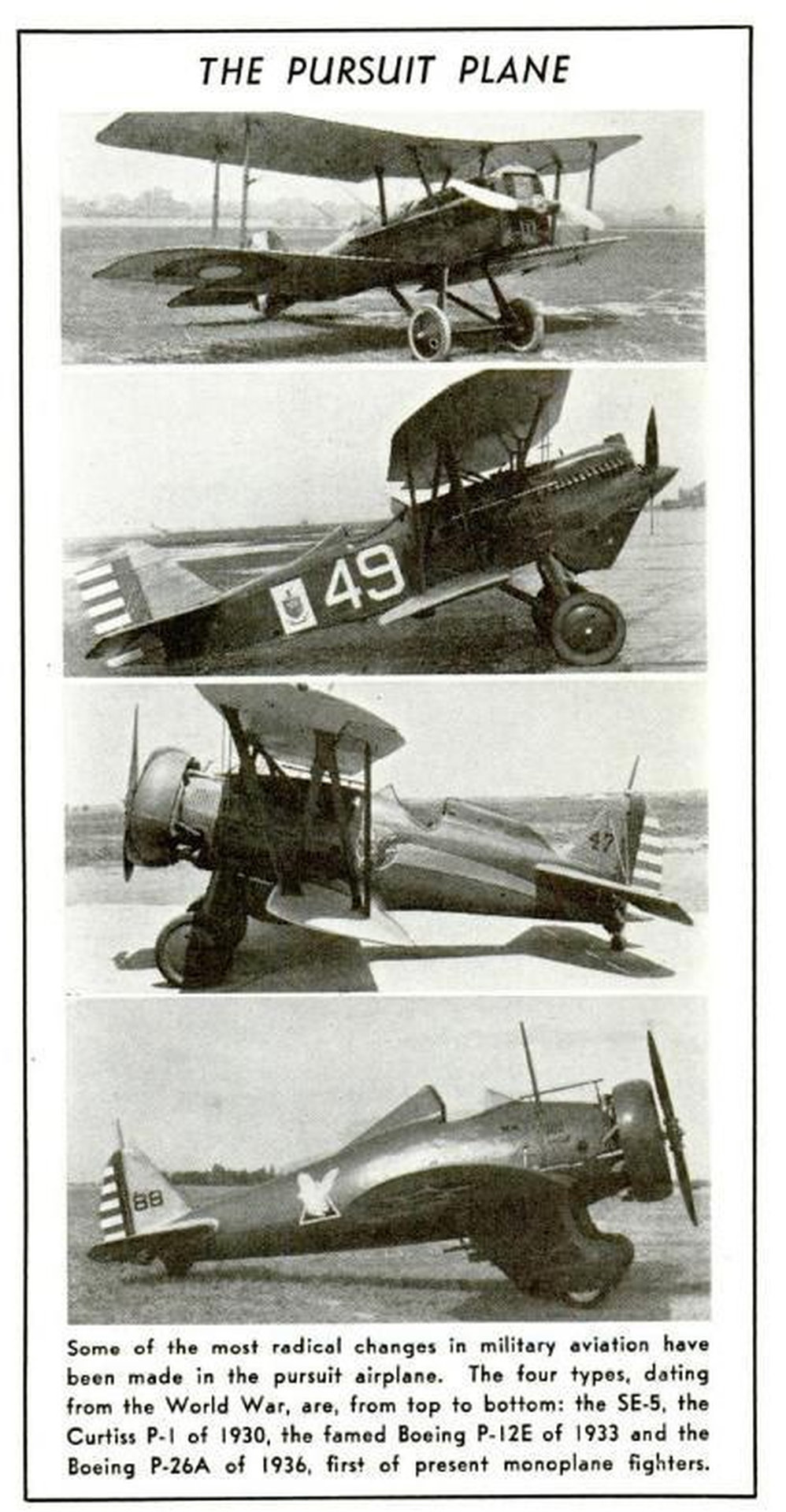
Major Hoyt Vandenberg’s article “Pursuit” provides a compelling narrative of the relentless quest for superiority in the skies, highlighting the intricacies of fighter plane development during a critical period in aviation history.
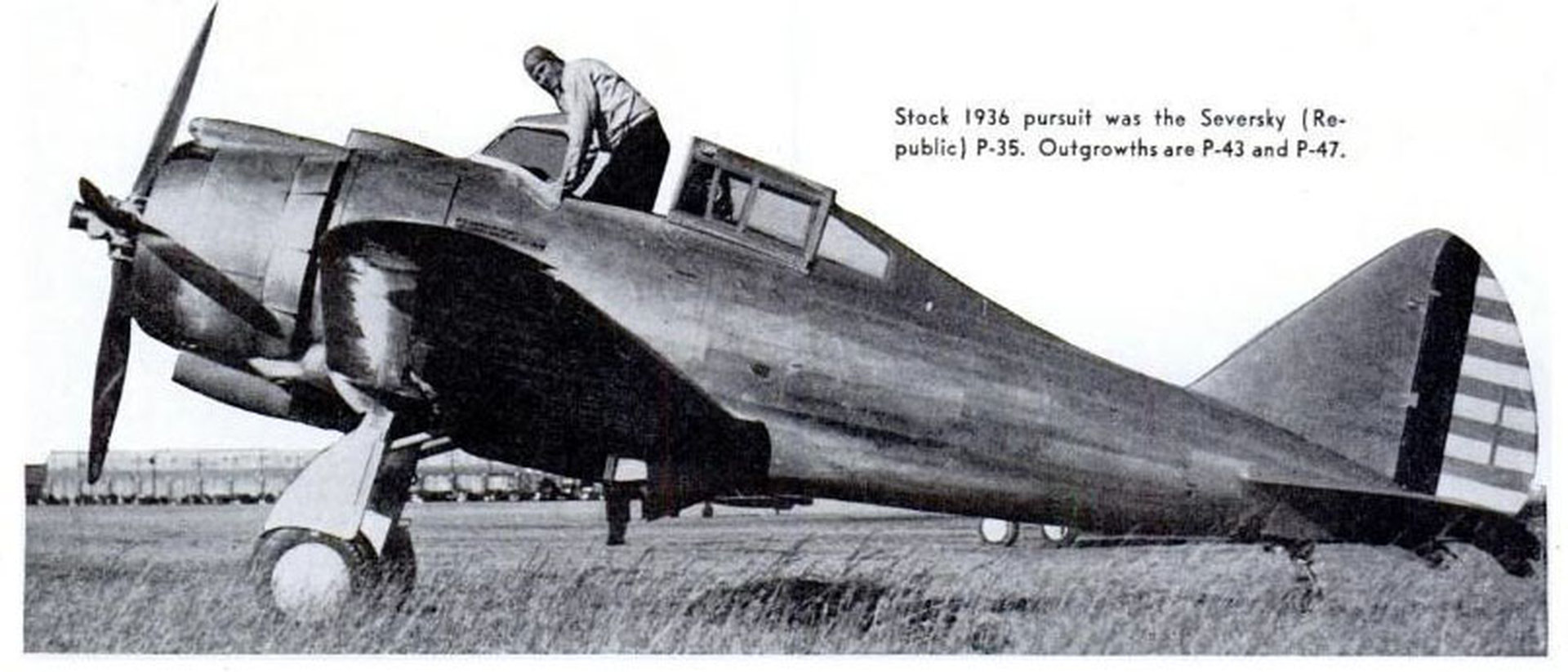
As we reflect on the advancements and strategic shifts discussed, it becomes evident that the pursuit plane was not merely a tool of war but a symbol of technological progress and innovation.
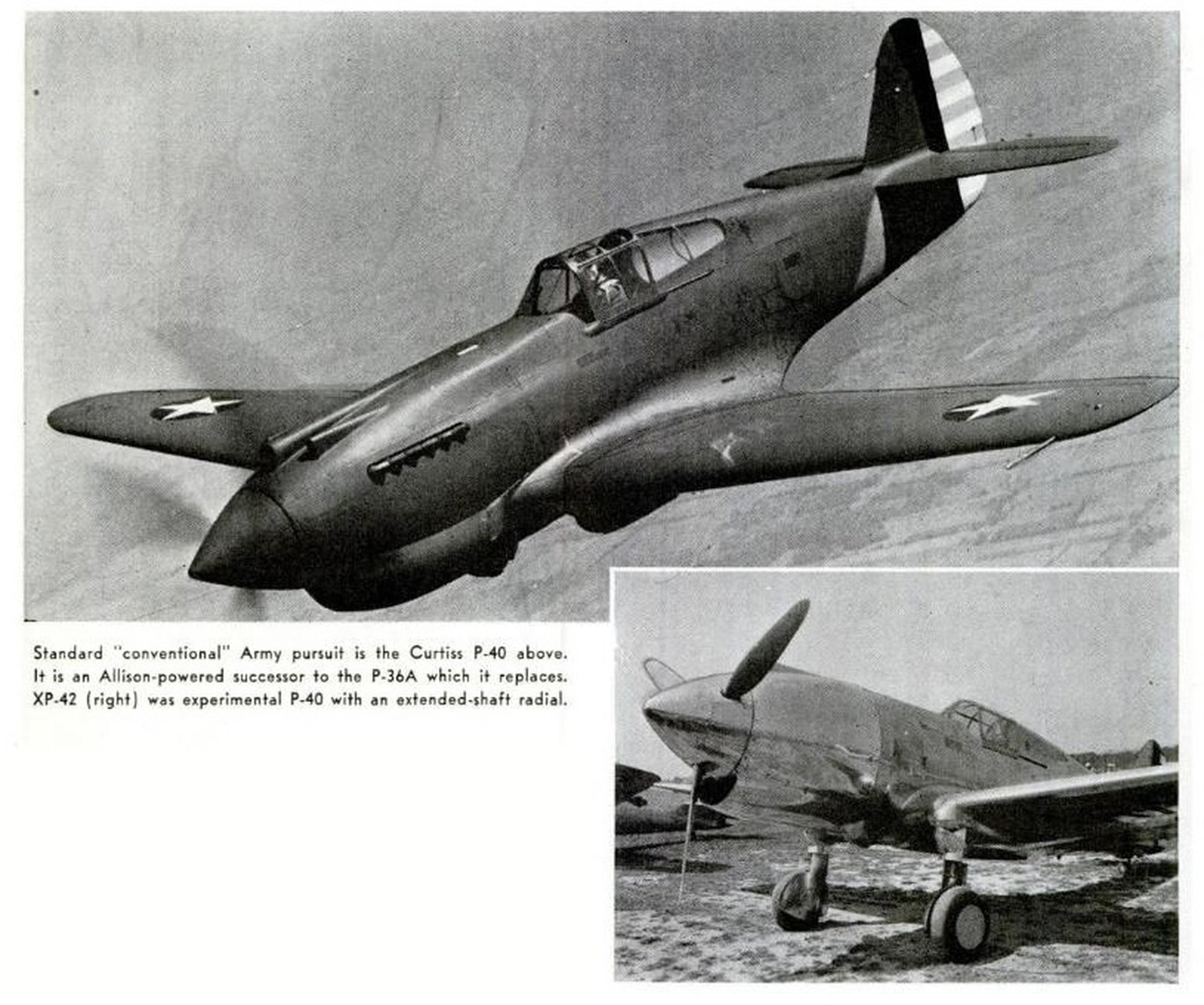
The lessons drawn from this article continue to resonate, reminding us that the balance of speed, firepower, and maneuverability remains as relevant today as it was in the early 1940s.
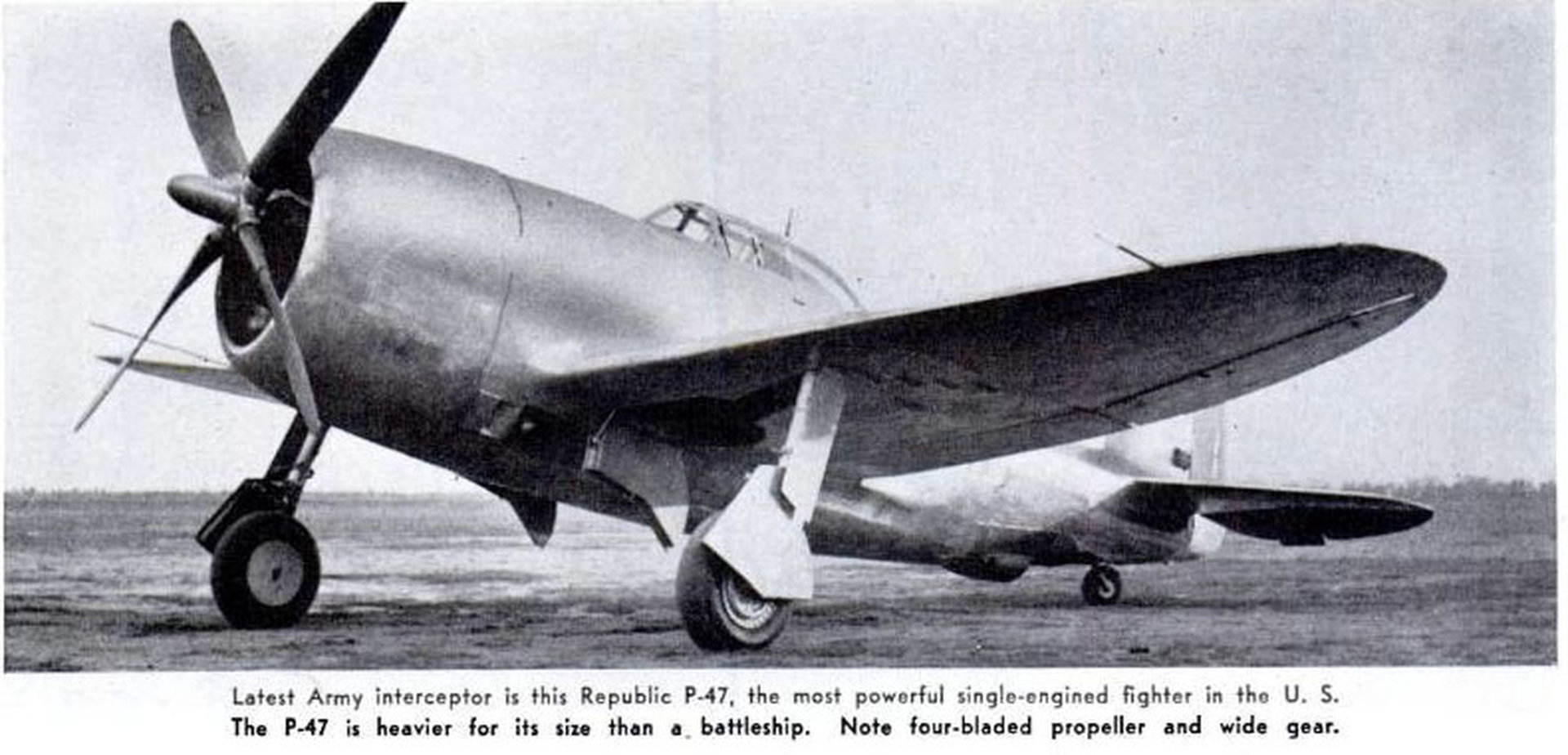
As aviation continues to evolve, the foundational principles laid out by pioneers like Vandenberg serve as a guide for future generations of engineers, pilots, and strategists committed to mastering the skies.
If you find my content enjoyable, please consider subscribing to receive email notifications when I post something new.
Thanks again, and I’ll see you in the next one!
Discover more from Buffalo Air-Park
Subscribe to get the latest posts sent to your email.



